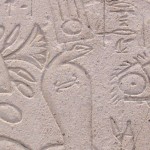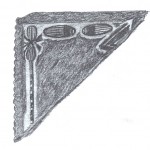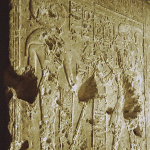
Meretseger: She Who Loves Silence. The Cobra Deity at Deir el-Medina
In the Western world the cobra rarely inspires sentiments of benevolence, warmth or good intentions. It is not a cuddly beast. Matters were more ambivalent in ancient Egypt where a range of wild animals were identified with deities imbued with admired values of physical strength, protection and courage, as well as less obviously admirable qualities like aggression, retribution, vengeance and retaliation. Like Sobek, the crocodile deity, and Sekhmet the lioness, the cobra deities comprised a mixture of attributes that centred on their fierce ability to defend themselves and to strike, hissing and spitting poison, to annihilate their aggressors. [more…]
Edition - April, 2013

The goddess Neith in the Early Dynastic period
The goddess Neith was one of Egypt’s oldest deities, very well documented from the Early Dynastic period, when Egypt was first brought together as a unified country. She is very familiar from later periods, particularly in the New Kingdom and Third Intermediate periods (figure 1). Over the millennia she was endowed with numerous attributes: a creation goddess, a sky goddess, a protector of the king (with Isis, Nephthy and Serket), protector of one of the Four Sons of Horus, the mother of Sobek, and the consort of Seth, occasionally associated with snake, cow and pig. So where did this great deity come from? The earliest evidence to allow the formation of a coherent picture is Early Dynastic. [more…]
Edition - December, 2011

Notes on the Goddess Pakhet
In her article on Hatshepsut in the December 2011 edition of the Magazine, Barbara O’Neill mentions the deity Pakhet. The following introduces what little is known about this elusive deity. Pakhet was represented in the form of a woman with a lion’s head (figure 1- click to see the bigger image). She looks very like leonine representations of Sekhmet and Bastet and was often associated with them. [more…]
 By
By